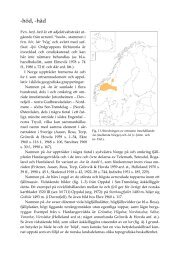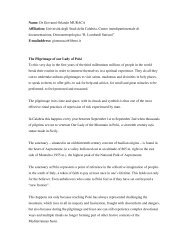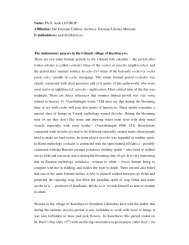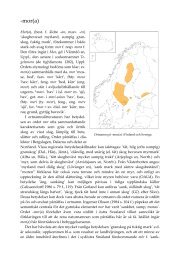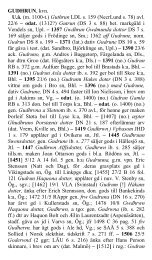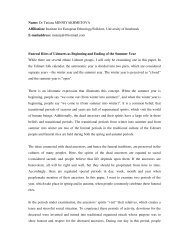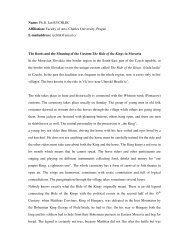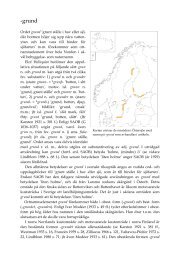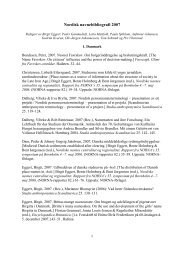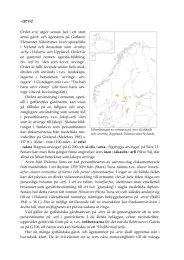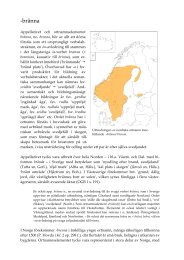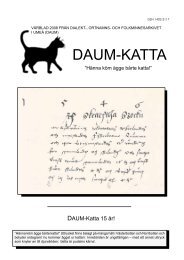NORNA-RAPPORTER 88 Binamn. Uppkomst, bildning, terminologi ...
NORNA-RAPPORTER 88 Binamn. Uppkomst, bildning, terminologi ...
NORNA-RAPPORTER 88 Binamn. Uppkomst, bildning, terminologi ...
Create successful ePaper yourself
Turn your PDF publications into a flip-book with our unique Google optimized e-Paper software.
Coming to grips with the multifacetedness of bynames 39<br />
Coming to grips<br />
with the multifacetedness of bynames<br />
By Silvio Brendler<br />
Anything complex enough to be interesting is multifaceted;<br />
one finds out different things by looking at different facets,<br />
without being obliged to claim [...] that the facet is the whole<br />
gem (Lass 1997, p. 384).<br />
1. Introduction<br />
Let me borrow two metaphors from the above motto. As name students consider<br />
bynames to be interesting, I infer from the first line of Roger Lass’s<br />
statement that bynames must be complex and thus multifaceted. From the multifacetedness<br />
of bynames I draw the conclusion that studying bynames is like<br />
gem cutting. It is this conclusion that I advance as my first thesis.<br />
I somewhat differ from the view Lass airs in line two. Considering byname<br />
students as gem cutters, I think that bynames present themselves as rough gems<br />
in need of being cut and polished – in other words, in need of being faceted by<br />
us. Only then can we look at their different facets. So my second thesis is: no<br />
facets without faceting.<br />
I do agree with the third line of the statement by Lass. I would like to modify<br />
and extend it, however, and put it forward as my third thesis, which is as follows:<br />
We cannot see the whole gem if we focus on the individual facets. On the<br />
other hand, there is no facet without a gem.<br />
To develop my three theses it is helpful to bear in mind that a facet, or an<br />
aspect of bynames, is to a gem, or bynames, as a part is to a whole.<br />
Now that I have put forward my theses, I will not any longer withhold the<br />
reason why we should consider the question how to come to grips with the<br />
multifacetedness of bynames. Having studied a selection of the international<br />
literature on bynames for more than a decade, I have come to the conclusion<br />
that byname studies tend to focus on various but individual facets of bynames.<br />
So byname students have, for instance, had an abiding interest in<br />
etymology (see the dictionaries of bynames) and classification (Brendler<br />
2007). Furthermore, there has been some debate over how to tell a byname<br />
from a hereditary surname (Mackel 1931, pp. 31–37; Bach 1952–1953, vol.<br />
2, pp. 73–76; Debus 2001, pp. 232–233). Bynames have frequently been<br />
studied to serve such extra-onomastic purposes as lexicography (Weekley &<br />
Pilkington 1921, Clark & Owen 1978, McClure 2010), dialectology (Kris-



